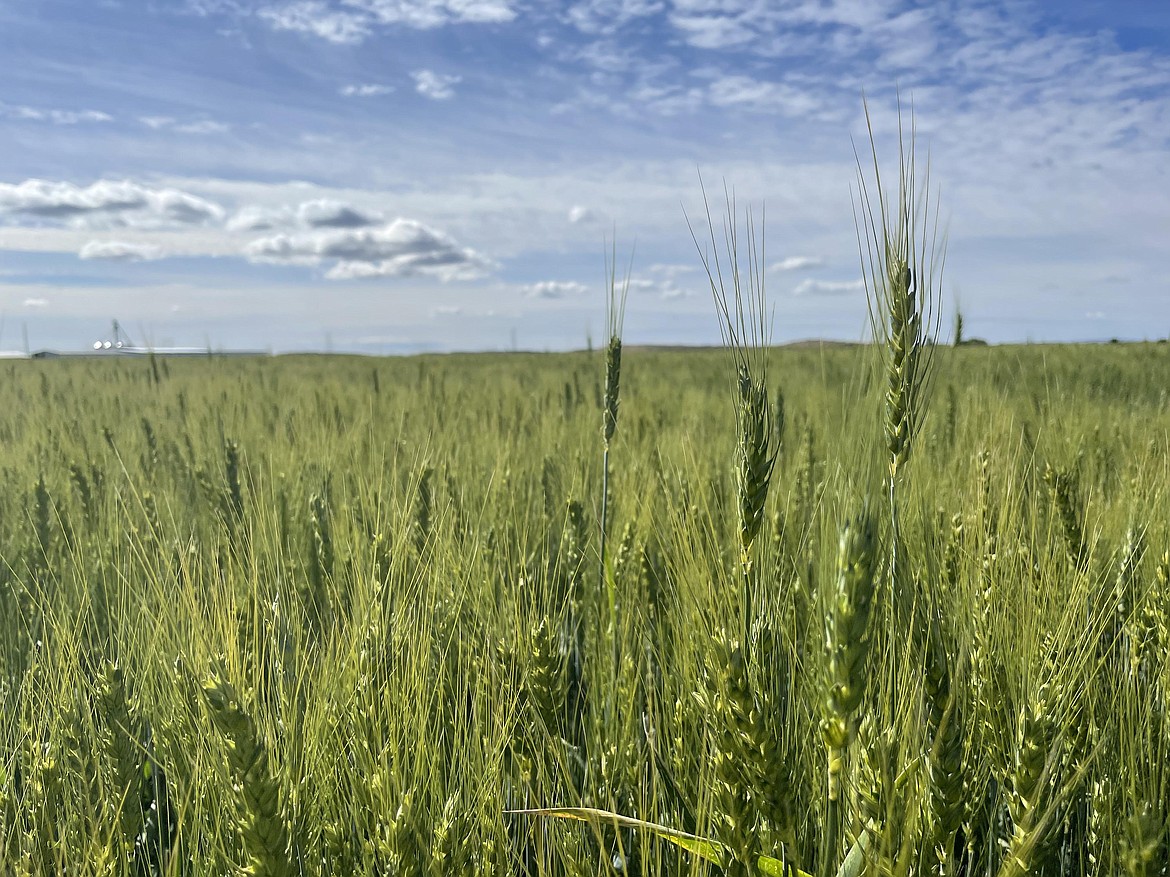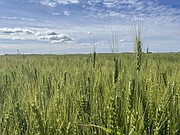State reports smallest wheat crop in decades; barley crop also down
MOSES LAKE — It was a rotten growing season for wheat farmers in the Columbia Basin, as the state’s wheat growers reported the smallest harvest in 57 years.
“This is a pretty tough year for wheat farmers,” said Joe Bippert, program director for the Washington Grain Commission in Spokane. “We last had production this low in 1964.”
According to the U.S. Department of Agriculture’s annual Small Grains 2021 Summary, which was published Sept. 30, while overall wheat acres sown in Washington in 2021 remained relatively unchanged from 2020, at just above 2.3 million acres, yields in 2021 plummeted to 39.1 bushels per acre, from 72.4 in 2020, prompting total wheat production in 2021 to fall by nearly 50% to 87.1 million bushels, from 166 million bushels in 2020.
Chris Mertz, director of the northwest region for the USDA’s National Agricultural Statistics Service in Portland, wouldn’t directly attribute the decline to the drought. But he said the lack of rainfall during the spring and summer didn’t help.
“Obviously, we did not get the moisture we needed,” Mertz said. “In other years, we had timely rain.”
Bippert said the rain stopped falling at the worst possible time, just as farmers were planting spring wheat.
“Timing is important,” Bippert said. “There was not enough moisture.”
Bippert also said the heat wave in late June and early July — when temperatures in the Columbia Basin hit as high as 115 degrees — also prompted a lot of the dry land wheat to mature too early.
“It didn’t get to the right height,” he said. “It didn’t get to sit and be green and fill the kernels.”
That means grain that is smaller, higher in protein, but yields less, Bippert explained.
And the USDA data reflects that, noting spring wheat — wheat planted in the early spring, as opposed to winter wheat, which is planted in the late autumn — across the region took a bigger hit from the drought than winter wheat, which at least had a little snowmelt to provide moisture.
Spring wheat production in 2021 was 16 million bushels, half of 33.2 million in 2020, with yields also falling by more than half to 30 bushels-per-acre in 2021 from 61 bushels-per-acre in 2020.
Winter wheat harvests and yields in Washington suffered, as well, however, falling to 70.9 million bushels at 42 bushels-per-acre in 2021 from 133 million bushels at 76 bushels-per-acre in 2020.
The heat and drought also affected the region’s barley harvest. According to the USDA, while Washington farmers planted around 70,000 acres in 2021 — down from 90,000 in 2020 — 2021 harvest and yield plummeted to 2.6 million bushels at 38 bushels-per-acre from 6.4 million bushels at 90 bushels-per-acre in 2020.
Mertz added the 2020 yield was something of an anomaly, with recent yields in Washington state normally around 70 bushels-per-acre.
Still, he said it was the lowest barley harvest in Washington since 1977.
Bippert said when combined with strong demand, prices for the Pacific Northwest’s soft white wheat have nearly doubled to around $10 per bushel at the beginning of October from an average of $5.87 per bushel in October 2020.
“The market is doing what the market does,” he said.
“Some producers were able to take advantage of higher prices, if they had wheat to sell,” Mertz said. “There’s a lot less wheat to sell.”
Charles H. Featherstone can be reached at cfeatherstone@columbiabasinherald.com.





